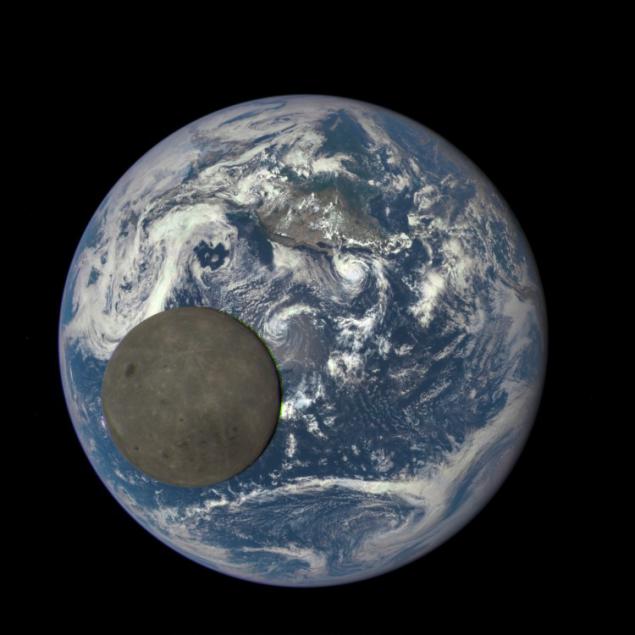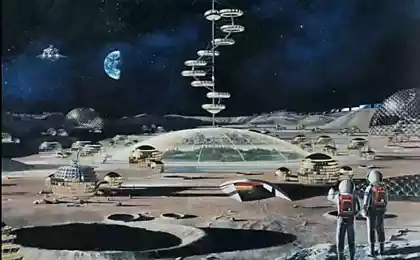992
The unit took DSCOVR moon passing in the background of the Earth

The camera on board the satellite Deep Space Climate Observatory ( DSCOVR ) withdrew a unique view of the moon, which is held against the backdrop of the illuminated side of the Earth. A series of photos shows the reverse side of the moon, which is never visible from our planet. You may notice the Sea of Moscow at the top left and bottom left a crater Tsiolkovsky.
Stunning beauty of GIF-animation опубликована Online NASA.
"It's amazing to see how much brighter than the Earth than the moon's surface, - says Adam Szabo (Adam Szabo), project scientist DSCOVR at Goddard Space Flight Center NASA. - Our planet - is truly a shining object in a dark space, compared to the lunar surface ».
These photos were taken 4-megapixel CCD camera Earth Polychromatic Imaging Camera (EPIC) on board the vehicle, with the use of a telescope. The distance to the Earth - 1, 5 million kilometers.
DSCOVR main mission is to monitor the solar wind in real time. This satellite is continuously keeps an eye constantly lit side of the Earth, performing scientific observations of the ozone level, vegetation, height of clouds and aerosol pollution.
Sputnik launched in February 2015 and to complete the work, he will start in September. The camera will take pictures every day to track changes in environmental performance throughout the day around the globe. Approximately twice a year in the frame DSCOVR will get both the Moon and the Earth. Now it happened the first time.
Photo taken July 16 between 15:50 and 20:45 EDT. The moon moves over the Pacific Ocean near the North America. The North Pole is on the left at the top, reflecting the orbital inclination of the Earth from the viewpoint of the spacecraft.
Photos passage of the moon on the background of the Earth first made in 2008, the unit Deep Impact, but with a much greater distance of 50 million km.
"Natural colors" of the Earth on each of the photos created by the combination of three monochrome images (R, B, G), are recorded continuously one after another. The interval between shots 30 seconds, a green filter is used last, because of this, on the right side of the Moon visible small green artifact ( photos in full resolution ).

In general, EPIC each frame photographed series of 10 images with different spectral filters in different bands, from ultraviolet to near-infrared.
Source: geektimes.ru/post/259892/
Scientists at Cambridge University have developed a game to help treat patients with schizophrenia
NASA is preparing a swarm of micro-satellites to the Moon























